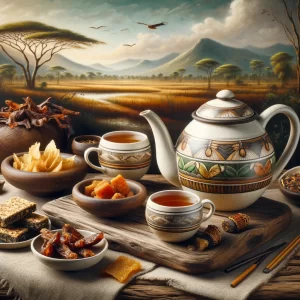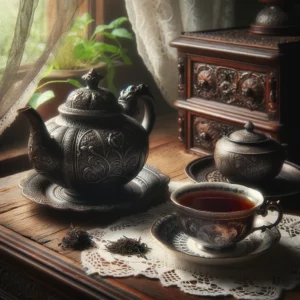Discover the unique world of Malawi White Tea, a rare gem in the tea industry that promises a taste unlike any other. Grown in the lush, fertile lands of Malawi, this white tea variant stands out for its delicate flavor, making it a must-try for tea enthusiasts and novices alike. Join us as we explore the origins, special brewing techniques, and the many ways to savor Malawi White Tea. This comprehensive guide will immerse you in the rich tapestry of Malawi’s tea culture, ensuring every cup brings you closer to the heart of Africa.
Table of Contents
- Introduction
- The Origins and History of Malawi White Tea
- What Makes Malawi White Tea Special?
- Brewing the Perfect Cup of Malawi White Tea
- Ways to Enjoy Malawi White Tea
- The Best Pairings for Malawi White Tea
- Where to Find Malawi White Tea and Tips for Storage
- Cultivation and Processing of Malawi White Tea
- Conclusion
Introduction
Malawi White Tea, a delightful beverage known for its light and refined flavor, has been capturing the hearts of tea lovers worldwide. This exquisite tea, harvested from the serene landscapes of Malawi, offers a unique taste that sets it apart from other white teas. In this post, we’ll delve into the fascinating world of Malawi White Tea, exploring its origins, characteristics, and the nuances of enjoying it to the fullest.
The Origins and History of Malawi White Tea
Malawi, often called the “Warm Heart of Africa,” is not only celebrated for its friendly people but also for its rich tea cultivation history. Tea production in Malawi dates back over a century, with the introduction of tea plants in the late 19th century. However, Malawi White Tea, with its distinct flavor profile, is a relatively new addition that has quickly gained prominence among tea aficionados.
Key Historical Insights:
- Start of Tea Cultivation: Tea was first introduced to Malawi in the 1890s, with commercial production starting in the early 20th century.
- Evolution: Over the years, Malawi’s tea industry has evolved, focusing on quality and sustainability, leading to the creation of premium products like Malawi White Tea.
What Makes Malawi White Tea Special?
Malawi White Tea’s uniqueness lies in its delicate flavor, which is much lighter than that of traditional white teas. This subtlety is a result of the specific climate and soil conditions found in Malawi, combined with meticulous cultivation and processing methods.
Special Characteristics:
- Flavor Profile: A gentle, nuanced taste with hints of citrus and floral notes, setting it apart from the more robust teas.
- Processing: The leaves are carefully handpicked and minimally processed, ensuring a high-quality, aromatic brew.
Brewing the Perfect Cup of Malawi White Tea
To fully enjoy Malawi White Tea, the brewing process plays a crucial role. The right technique can enhance the tea’s natural flavors, providing an unparalleled drinking experience.
Brewing Steps:
- Water Temperature: Heat water to just below boiling (around 175°F or 80°C) to prevent burning the delicate leaves.
- Tea Quantity: Use about 1-2 teaspoons of tea leaves for every 8 oz (about 240 ml) of water.
- Steeping Time: Steep for 3-5 minutes, depending on your flavor preference. Shorter steeping times yield a milder flavor.
Ways to Enjoy Malawi White Tea
Malawi White Tea is versatile and can be enjoyed in various ways, each method offering a different taste experience.
Enjoyment Methods:
- Plain: Experience the tea’s natural flavors without any additions.
- With Lemon or Honey: Add a slice of lemon or a teaspoon of honey to complement the tea’s floral notes.
- Iced: Brew a stronger batch, let it cool, and serve over ice for a refreshing drink.
The Best Pairings for Malawi White Tea
Pairing Malawi White Tea with the right food can enhance both the tea and the culinary experience.
Food Pairings:
- Light Pastries: Complement the tea’s delicate flavors with croissants or shortbread cookies.
- Fresh Fruit: Pair with slices of peach or apricot to match the tea’s subtle fruitiness.
- Cheese: Soft cheeses like Brie or Camembert can balance the tea’s light flavor.
Where to Find Malawi White Tea and Tips for Storage
Finding Malawi White Tea might require a bit of searching, but it’s well worth the effort. Once you’ve acquired this precious tea, proper storage is key to preserving its quality.
Finding and Storing:
- Purchasing Tips: Look for reputable tea suppliers or specialty stores. Online tea shops are also a good resource.
- Storage: Keep the tea in a cool, dark place in an airtight container away from strong odors.
Cultivation and Processing of Malawi White Tea
The exceptional quality of Malawi White Tea is a direct result of the meticulous cultivation and processing practices employed in Malawi. The tea’s journey from leaf to cup is a careful process that preserves its delicate flavors.
Cultivation Insights:
- Environment: Grown in the unique climate and rich soils of Malawi, which contribute to the tea’s distinctive taste.
- Harvesting and Processing: The tea leaves are handpicked and gently processed, ensuring the preservation of their natural qualities.
Conclusion
Malawi White Tea offers a unique tasting experience that reflects the rich tea heritage of Malawi. From its historical roots to the careful cultivation and processing practices, every aspect of Malawi White Tea is steeped in tradition and quality. Whether you’re a seasoned tea connoisseur or just beginning to explore the world of tea, Malawi White Tea is a must-try that promises to delight your senses and introduce you to the subtle complexities of white teas.




